A Helmet for the Chinese (I)
- By Guest blogger
- 31 October, 2014
- 1 Comment
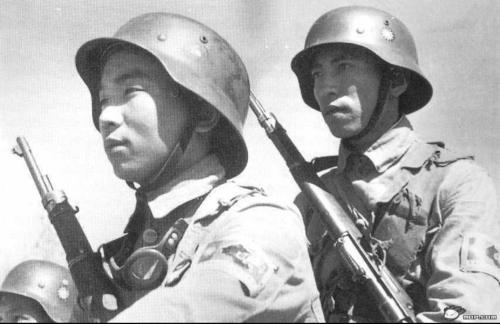
(The German ‘Fritz’ helmet was a characteristic part of the Chinese uniform in World War Two, especially in the early years of the conflict with Japan. This is the first of a two-part series on this iconic item. It was first published on this website, run by Alexander and Sons restorations – a great source for information on helmets and history more generally.)
Perhaps some of the more confusing images to come out of the Second World War are photographs of Chinese soldiers wearing German helmets. Some of the confusion may come from knowing that the Germans were allied to the Japanese. If Japan was fighting the Chinese, then why were the Chinese wearing German helmets. In truth the helmet in these photos are not Chinese copies but are in fact real German-produced helmets. The reason as to why the Chinese are wearing them lay in the complex relationship that existed between Nationalist China and Germany in the 1930s.
Sino-German Cooperation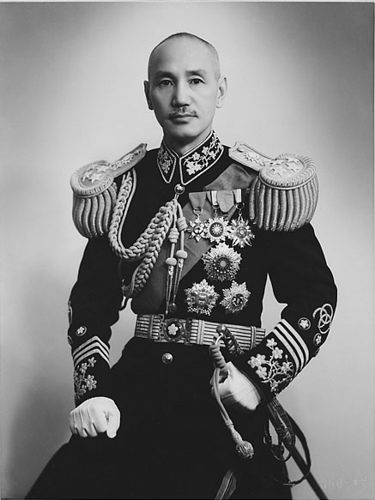
Cooperation between Germany and China was in fact a logical choice. In the 1930s China and her army were in desperate need of modernization. Although the threat from warlords had mostly been dealt with by the 1930s China’s ability to produce manufactured goods was far behind what was needed. China faced a growing threat from Imperial Japan and an internal communist threat which wished to overthrow the Nationalist regime of Chiang Kai-shek (right) and insert themselves as the rulers of China .
If Nationalist China wished to confront both these threats it was going to need a modern military with the latest equipment. While China may not have possessed the ability to manufacture the modern equipment it needed it did have plenty of raw materials, which it could use to obtain what it needed. The question was who could China turn to? The US, Great Britain and France all had territorial concessions with China. All three nations preferred a weaker China which would not threaten their trade agreements and territorial concessions. Although the Soviet Union had aided the Nationalist government in the past they clearly had political designs on China. Germany on the other had lost its colonies including its Chinese concessions after the treaty of Versailles. In the post-WWI era Germany no longer had colonial designs in the Far East. While Germany had a powerful manufacturing capabilities, they lacked access to the raw materials they needed, limited by the Treaty of Versailles. In an era where Germany had few friends, it seemed an alliance would be perfect for both countries. China could export its raw materials to Germany who needed them, in return China could procure military equipment to modernize its armed forces. Chiang Kai-Shek, the head of the Kuomintang, also greatly admired Germany. Chiang believed that lessons from Germany’s unification could be emulated in China.
China’s New Helmet
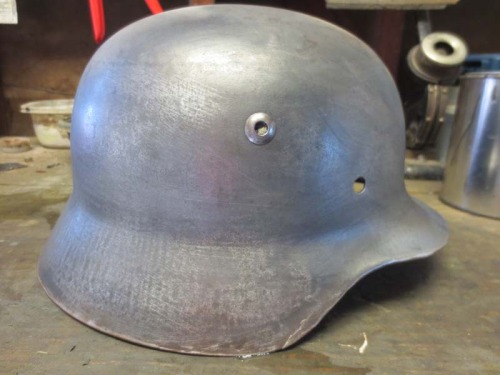
Early production M35 helmet shell. This is the exact model that would have been exported to China
It was this relationship that was formed between China and Germany that would lead to the Chinese military’s purchase of German M35 helmets for their own use. As China moved to modernize its armed forces the choice of a German helmets was a logical one. The M35 helmet was the most modern steel combat helmet of its day.
Made of press formed molybdenum steel, the helmet offered excellent protection, with a skirt that guarded the wearer’s neck and ears and a visor that offered some face protection. The helmet weighed far less that its Great War predecessor, but was made from superior quality steel. The helmets were made in seven sizes, from 60 cm up to an enormous 72.
The Liner
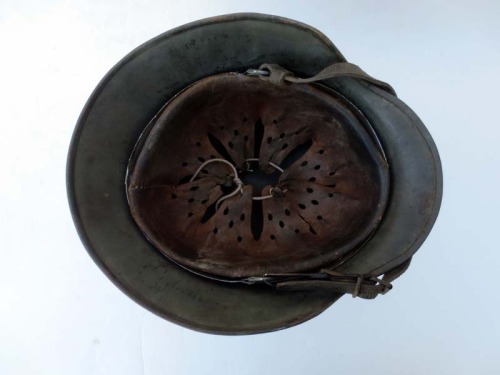
1935 production M35 helmet with a new model M31 liner system
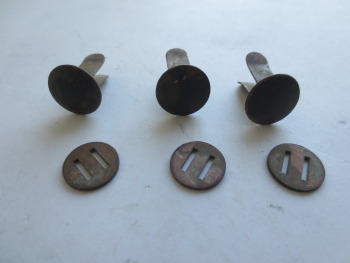
Original set of 1935 production brass liner split pins and slotted washers. This is the only version found in Chinese M35
The helmet also had an improved liner system made of two aluminum bands secured into the helmet with the aid of three brass pins and slotted washers. An outer band secured the liner into the helmet while an internal band held leather suspension with a wool felt pad for added comfort. The aluminum liner used during this era is referred to by collectors a the unreinforced version. Between 1931 and 1937 German factories produced this version. It was soon found that the soldier’s practice of hanging the helmet by it’s chinstrap from field gear when on the march or when not in use would warps the liner’s outer band which after time would cause the band to fracture. In 1937 the Germans redesigned the outer band by riveting two strips of aluminum to both sides of the band thus reinforcing it. These 2nd pattern liners never saw service in China, as at the time of their production Sino-German cooperation was at an end.
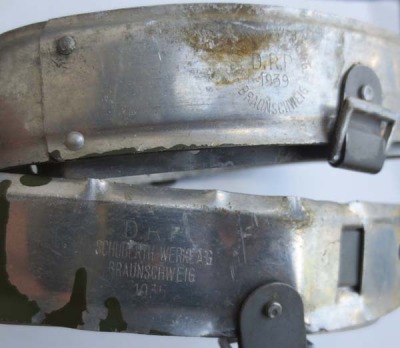
Unreinforced and reinforced M31 liners side by side
The Chinstrap
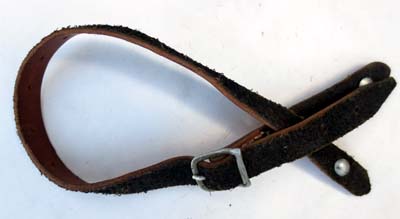
The German M35 chinstrap with aluminum hardware. The standard strap of the Chinese M35
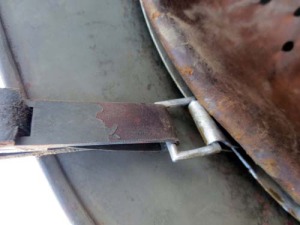
M27 chinstrap
Chinese M35s are found fit with at least three different types of chinstrap. The most common is the German M35 version, a basic leather strap with aluminum hardware, but more than a few have been found fit with the earlier carbine hook, or M27 chinstrap or the double carbine clip strap. These same strap were being used by the German army as well. The chinstrap and liners from Chinese M35s are often found devoid of any manufacture markings or dates. At the time of production the German government did not require the marking or dating of military equipment. This did not change until 1937, when the German government ordered their military contractors to maker mark and date all equipment. For this reason many of the helmet component, and even the helmets themselves sent to China between 1935 and the 1937 are unmarked. (To be contd.)



 Copyright © 2024
Copyright © 2024
Since the sino german cooperation actually according to a letter of Goering dataed April 28,1938 and in the lapse of time between the Shangai battle that lasted at almost at the end of 1937, there is no evidence that the new reinforced liner was never supplied to Chinese.I have a reinforced one dated 1937.There is little literature on behalf.While Germans supplied heavy equipment like aircraft,m37 CANNONS AND HEAVIER ARTILLERIY,I DO NOT SEE THE POINT
TO BE SO SURE THAT GERMANS NEVER SUPPLIED M31 REINFORCED LINER.
ANOTHER EXAMPLE I Have in stock a steel liner dated 1938.just when you see with your eyes the items you can judge.those eventns prior and during ww2
were so vaste that we cannot take for granted some statements.